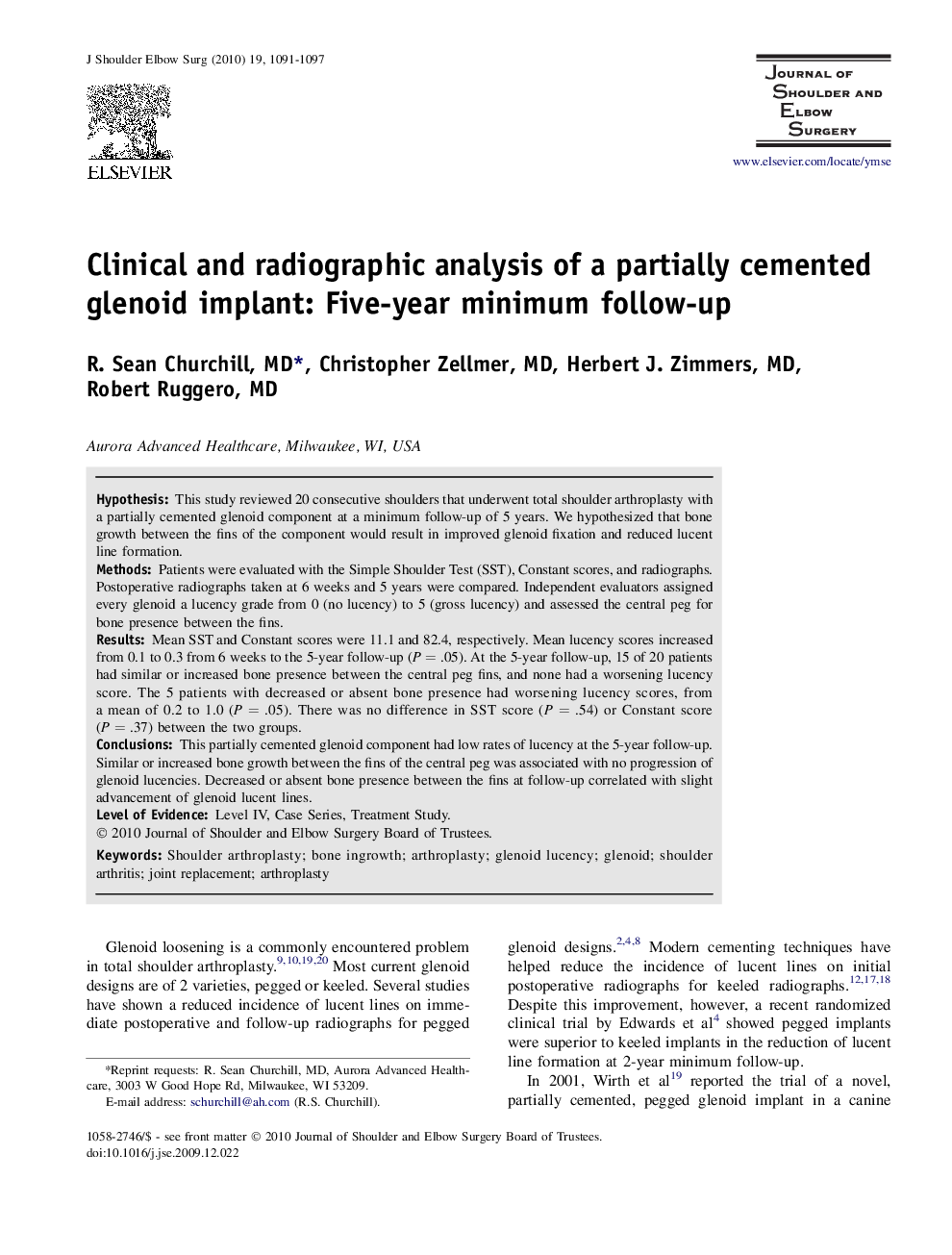| Article ID | Journal | Published Year | Pages | File Type |
|---|---|---|---|---|
| 4074668 | Journal of Shoulder and Elbow Surgery | 2010 | 7 Pages |
HypothesisThis study reviewed 20 consecutive shoulders that underwent total shoulder arthroplasty with a partially cemented glenoid component at a minimum follow-up of 5 years. We hypothesized that bone growth between the fins of the component would result in improved glenoid fixation and reduced lucent line formation.MethodsPatients were evaluated with the Simple Shoulder Test (SST), Constant scores, and radiographs. Postoperative radiographs taken at 6 weeks and 5 years were compared. Independent evaluators assigned every glenoid a lucency grade from 0 (no lucency) to 5 (gross lucency) and assessed the central peg for bone presence between the fins.ResultsMean SST and Constant scores were 11.1 and 82.4, respectively. Mean lucency scores increased from 0.1 to 0.3 from 6 weeks to the 5-year follow-up (P = .05). At the 5-year follow-up, 15 of 20 patients had similar or increased bone presence between the central peg fins, and none had a worsening lucency score. The 5 patients with decreased or absent bone presence had worsening lucency scores, from a mean of 0.2 to 1.0 (P = .05). There was no difference in SST score (P = .54) or Constant score (P = .37) between the two groups.ConclusionsThis partially cemented glenoid component had low rates of lucency at the 5-year follow-up. Similar or increased bone growth between the fins of the central peg was associated with no progression of glenoid lucencies. Decreased or absent bone presence between the fins at follow-up correlated with slight advancement of glenoid lucent lines.
